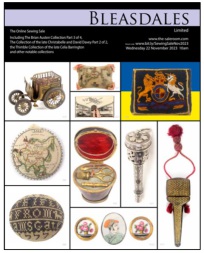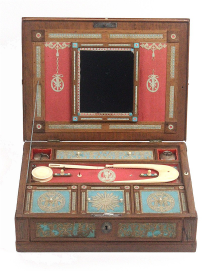
Bobbins
These represent an extensive collecting field in their own right. Lace is essentially made by twisting thread in varying forms of complexity. Bobins were used as convenient holders for thread and eased the continuous crossing over of threads, while the pattern was being worked on the lace pillow or other relevant platform. Lace making was both a peasant craft and a skill of great gentility and the tools and implements reflected the exponent's class. Most common are bobbins of wood and bone of turned or plain form, many incorporate eleborate decoration, from simple names to verses, and inlaid and stained decoration. Amongst the most sought after are hanging bobbins that commemorated executions. The variety of bobbins is almost too vast to recount, but they go by names such as Leopards and Tigers (inlaid with pewter dots), Butterflies (inlay in the shape of insect wings), Tallies (broad bands of pewter at the base), are just a few. Others relate to specific areas by virtue of their style and shape. In addition to bobbins a number of other tools are included in lace making collections - glass lace makers lamps, pillows and stands, table winders and lace winders.







